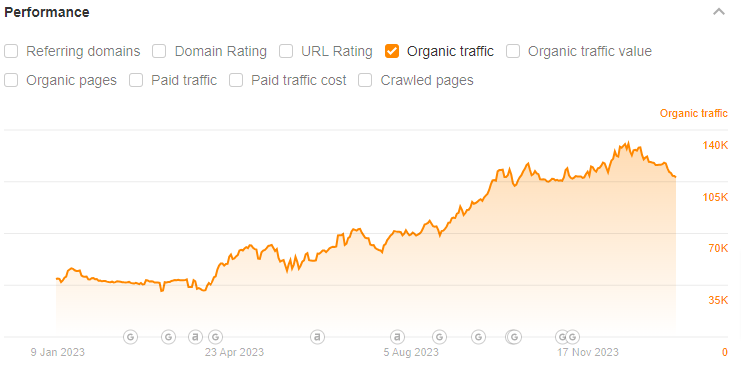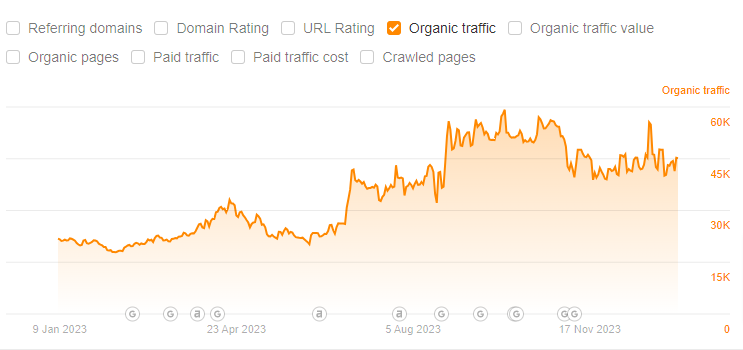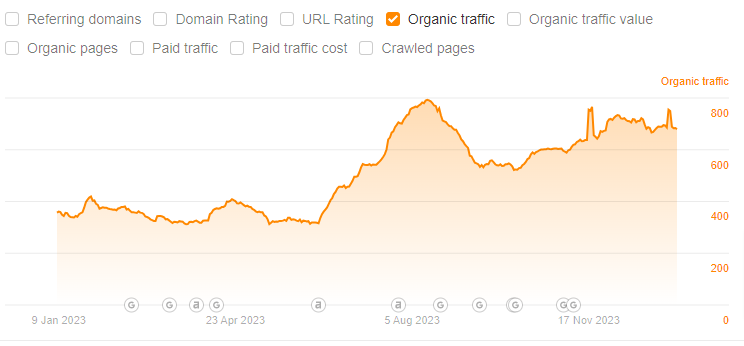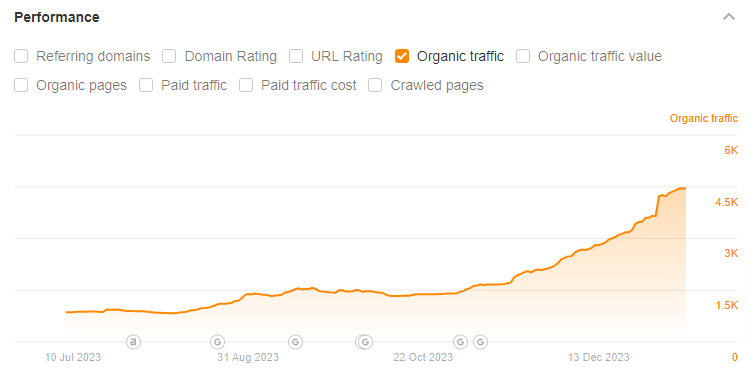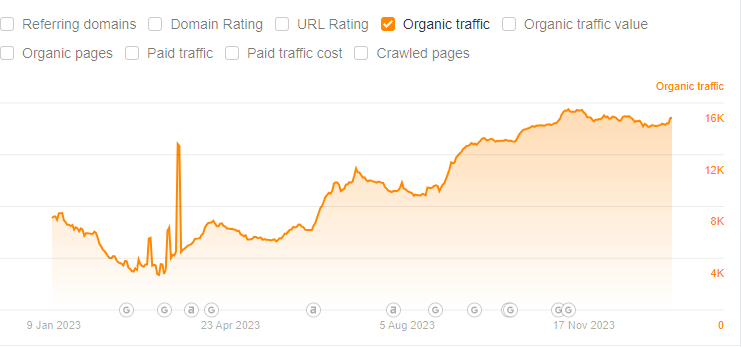The One Constant in the Constantly-Evolving SEO World:
The SEO world is full of changing algorithms and resultant new strategies.
Although some SEO specialists believe that these contemporary teachings are the way to go, others swear by conventional SEO tactics. The truth is, there is no way for us to concretely know if one approach is better than the other.
What we do know is that the number one SEO objective for any website is generating traffic and attracting users.
As per Entrepreneur, “Backlinks are still the number one most important ranking signal that Google uses”.
In this blog, we will be covering backlinks and their importance, but more specifically, we will be talking about what is white hat SEO and the white hat link-building strategies that you can use to boost your SEO in 2021.
Backlinks – What Are they and Why are they so Vital?
When you get sites to link their content back to a site that you own, you are essentially link-building. Like we mentioned earlier, Google has immensely intricate and constantly evolving algorithms, but the one thing that never changes is the essentiality of links.
Backlinks always play an influential role in determining your keyword rankings on search engines. Moreover, the greater the quality of your website links, the more trustworthy your website is considered by those search engines.
The Difference between White Hat SEO and Black Hat SEO Link Building:
If you are a fan of spy novels or movies, you must have come across the term ‘black hat’, which is used to define a person with malicious or evil intentions.
When it comes to SEO, this term has pretty much the same meaning – although it’s slightly less extreme.
The black hat form of SEO attempts to trick or hack Google’s algorithm in order to convince it that a website has high value. It tries to achieve this through tricks and tools like keyword stuffing.
Sometimes, paid link schemes are also used to boost a website’s ranking. Such shady techniques are quickly grasped by Google’s algorithm team, resulting in a penalty for the offending websites.
The penalties are either a sharp dip in the websites’ rankings or a complete elimination from the index itself.
Here are some examples of black hat techniques for SEO link building:
- Concealing anchor texts and keywords in blog posts or other site pages by writing them in a color that is the same as the color of their page’s background.
- Cloaking – a process by which users are presented content that is different from what is presented on a search engine.
- Purchasing website network links that appear to possess authority but don’t.
- Manipulating the CTR (Click-through rates).
- PBN (Private Blog Network) participation.
In contrast, white hat SEO link building focuses on developing a valuable website that caters to the demands and requirements of its visitors.
White hat link-building techniques observe the search engine results and determine the kind of content that they should focus on in order to prove beneficial for the search engine users.
Since white hat link-building strategies focus on producing valuable content, the website visitors tend to spend more time on the sites, leading to a reduction in bounce rates, resulting in better on-site times.
In addition to all of this, white-hat link-building tactics also increase organic website traffic since the site ranks for a greater number of keywords.
What about Grey Hat Link Building?
Yes, there is indeed a grey hat approach to link building, which basically combines white and black hat techniques.
Although grey hat techniques do not violate the guidelines specified by Google or Bing to the extent that black hat techniques do, they can still get you into hot water.
Here are a couple of examples of grey hat techniques:
- Purchasing expired domains that contain numerous links that link back to the website.
- Purchasing links to a certain site from a different website in bulk, but without using the ‘sponsored’ tag.
Top White Hat Link Building Strategies for Your Website:
Now that you have a firm grasp on what is white hat link building, we can now talk more about how to build white hat links. Below are some of the best white hat SEO practices for your commercial website:
1) High-quality content:
When we talk about white hat search engine optimization, producing content that is beneficial or entertaining is perhaps the ideal organic method of gaining links. Why? This is mainly because creative material never becomes outdated.
Good content encourages people to share links. You should start by developing industry-related blog posts that you think will attract a large number of eyeballs. Producing high-quality content is also a cheap white hat SEO method.
This is primarily because it fetches traction, traffic, and revenue while costing you pretty much nothing. All in all, producing premium content is one of the most reliable and effective white hat link-building strategies.
If you produce topical and useful content, you are bound to attract traffic sooner rather than later, and eventually, gain backlinks. Do not forget to focus on SEO Guide while drafting the content – you could produce the best piece of writing ever produced, and it will still mean nothing if no one can see it.
Prior to publishing, honestly ask yourself if your content is worth reading, or if you would enjoy reading it. In case the answer is negative – or even if you cannot come to a definitive answer, you need to return to your drawing board; online platforms are saturated, and average content is unlikely to make much (if any) difference.
Another thing to remember during content production is that length does not necessarily equate to quality. Completely avoid adding filler content just for the purpose of elongating your post; instead, elaborate and explain the essential points of your post. MarketingProfs says that the ideal length for a blog post is 1,142 words.
Before we move on to the next strategy, let us quickly highlight the key features of good content:
- In-depth and elaborate
- Satisfies the intent of the user
- Possesses excellent readability and user experience
2) Reclaiming broken links:
Another simple but effective manual white hat link building method is, quite literally, link building (or rather, rebuilding). When you reclaim any broken links on your website, you are essentially building up the site’s DA (Domain Authority).
In addition, this approach falls entirely under the umbrella of white hat SEO practices and its simplicity means that it can be executed by those who are still not entirely familiar with how to do white hat SEO.
Essentially, a broken link is any link that no longer works due to any of the below reasons:
- An inaccurate link URL was entered by the site manager.
- The website that contained the link pulled the linked webpage out (this is what is referred to as a ‘404 error’).
- The website associated with the link is not existent anymore.
- A firewall or software is making the website inaccessible.
- The site manager has linked to any website that is caught in a firewall which is disallowing outside access.
You need to pinpoint any dead links and try to fix them, using any of the below methods:
- Contacting the linking site and requesting a fix.
- Redirecting the broken page towards another location.
- Replacing the content present on the broken URL.
- Redirecting the broken pages towards other relevant website pages.
- Letting it stay as error 404.
3) Guest Blogging:
Guest blogging (also known as guest posting) is one of the most tried and tested white hat link-building strategies. With guest blogging, you can build up your website’s link profile – not to mention that it is an excellent method of increasing site traffic.
So, what exactly is a guest post? Basically, it is a post that you produce on another website that has a niche similar or identical to yours. Of course, guest posting works both ways, meaning that you can invite other bloggers to write for your site. Sites often promote posts on their content channels, resulting in additional engagement.
However, you need to ensure that the website will be linking back to the content that you have produced before they publish their own.
Remember that as far as SEO goes, both the above approaches are considerably different from each other.
In fact, you need to be careful about getting your website penalized as a result of using spam guest posts in order to manipulate your website rankings on Google’s SERP. Here are a few examples of such violations:
- Paying money in order to get links or link-containing posts.
- Exchanging links for goods or services.
- Sending ‘free’ products to someone so that they will write about that product and add a link.
- Excessive exchanges of links partnering with other websites with the sole purpose of link exchanges.
- Using automated services or programs for the purpose of creating links.
- Large-scale guest blogging campaigns or article marketing with links to anchor texts that are rich with keywords.
4) The ‘Skyscraper’ Approach:
Brian Dean, one of the most renowned backlink gurus, was the one to coin this name. While the Skyscraper approach demands some degree of effort, it can deliver tremendous rewards as far as white hat backlinks go.
The concept of this approach is actually fairly simple and can be broken down into three basic steps:
- Identify a keyword that you wish to use for ranking.
- Use that keyword to find the top 10 pieces of content on Google and dig through each one.
- Produce a content piece that is 5 times better than what you saw during step number 2.
As we said, the concept itself is pretty straightforward. So, what is the hard bit? Producing the kind of content that is too hot to handle.
5) Reverse Engineering your Competitors’ Links:
If you possess a competitive spirit, you will love this white hat link-building strategy. With the advent of tools such as Spyfu and Ahref, you can easily view every one of your rivals’ backlinks. The next step is figuring out the way your competitors obtained those links and imitate those techniques.
Final Words:
Google’s algorithms continue to get smarter with each passing day, which means that you cannot purchase shady backlinks and hope to get away without penalties or punishments from Google.
We have covered several white hat link-building strategies in this guide and, while these strategies might appear pretty simple on paper, they will need substantial effort, time, and dedication on your part.
With each inbound link that you obtain, you get yourself closer to improved website rankings on search engines. No SEO campaign can be successful unless it contains a solid backlink profile, which means that it is something that is worth committing your energies to.
We hope that this blog on white hat link-building strategies will prove useful to you in your journey towards organic link building and, by extension, improving your website’s search engine rankings.







